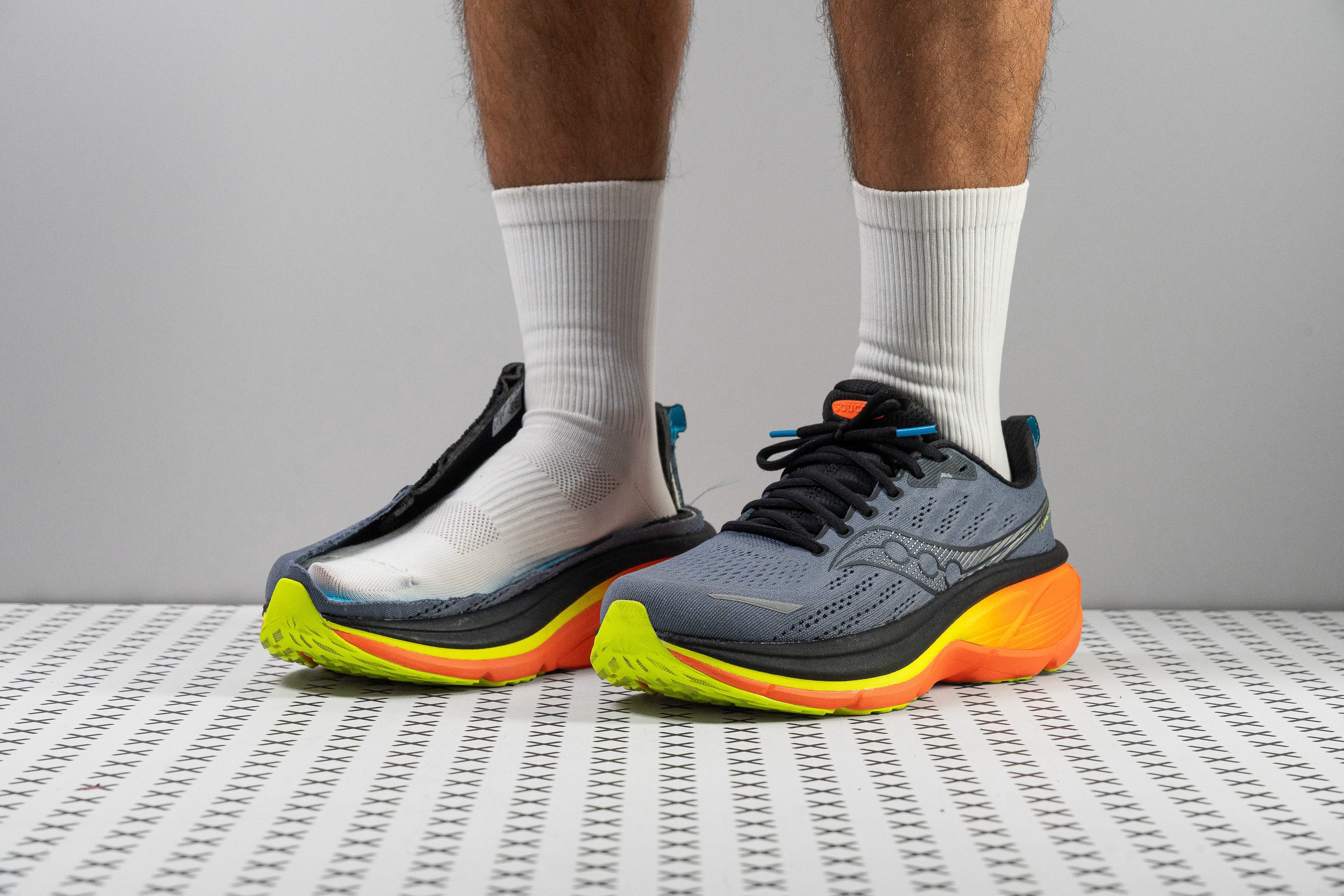Our verdict
Pros
- Fantastic energy return with PWRRUN PB foam
- Lighter than previous version
- Excellent cushioning for long miles
- Top-tier stability with redesigned midsole
- Upper offers top comfort
- Outsole redesign with improved grip
- Premium SRS insole
- Top-tier stability thanks to midsole redesign
Cons
- Price hike from previous version
- Poor breathability
- Lacks agility due to its size
Audience verdict
Comparison
The most similar running shoes compared
+ + Add a shoe | |||||
|---|---|---|---|---|---|
| Audience score | 77 Decent! | 82 Good! | 88 Great! | 82 Good! | |
| Price | £160 | £140 | £160 | £180 | |
| Pace | Daily running | Daily running | Daily running | Daily running | |
| Arch support | Stability | Stability | Stability | Stability | |
| Weight lab Weight brand | 10.1 oz / 286g 10 oz / 283g | 9.5 oz / 269g 9.4 oz / 266g | 11.6 oz / 329g 11.8 oz / 334g | 10.4 oz / 295g 10.7 oz / 304g | |
| Drop lab Drop brand | 7.1 mm 6.0 mm | 8.7 mm 8.0 mm | 7.2 mm 8.0 mm | 9.3 mm 8.0 mm | |
| Strike pattern | Mid/forefoot | HeelMid/forefoot | HeelMid/forefoot | HeelMid/forefoot | |
| Size | - | True to size | Slightly small | True to size | |
| Midsole softness | Soft | Soft | Balanced | Balanced | |
| Difference in midsole softness in cold | Small | Normal | Normal | Small | |
| Toebox durability | Decent | Decent | Decent | Good | |
| Heel padding durability | Decent | Good | Bad | Good | |
| Outsole durability | Good | Good | Good | Good | |
| Breathability | Warm | Warm | Moderate | Moderate | |
| Width / fit | Medium | Medium | Medium | Medium | |
| Toebox width | Medium | Narrow | Wide | Medium | |
| Stiffness | Moderate | Moderate | Stiff | Moderate | |
| Torsional rigidity | Stiff | Stiff | Stiff | Stiff | |
| Heel counter stiffness | Stiff | Stiff | Stiff | Stiff | |
| Heel lab Heel brand | 40.2 mm 38.0 mm | 36.9 mm 36.5 mm | 39.1 mm 41.0 mm | 39.9 mm 40.0 mm | |
| Forefoot lab Forefoot brand | 33.1 mm 32.0 mm | 28.2 mm 28.5 mm | 31.9 mm 33.0 mm | 30.6 mm 32.0 mm | |
| Widths available | NormalWide | NormalWideX-Wide | NormalWide | NormalWideX-Wide | |
| Orthotic friendly | ✓ | ✓ | ✓ | ✓ | |
| Season | All seasons | All seasons | All seasons | All seasons | |
| Removable insole | ✓ | ✓ | ✓ | ✓ | |
| Ranking | #333 Bottom 9% | #275 Bottom 25% | #135 Top 37% | #279 Bottom 24% | |
| Popularity | #120 Top 33% | #87 Top 24% | #296 Bottom 19% | #19 Top 6% |
Who should buy
The Saucony Hurricane 25 is an excellent choice for:
- Runners who enjoyed previous versions but wanted a lighter, more energetic ride. Saucony truly delivered!
- Those seeking a daily trainer that combines top-tier stability with plush comfort.
- Heel strikers needing solid support in a shoe that performs well at both easy and moderate paces, across short or long distances.
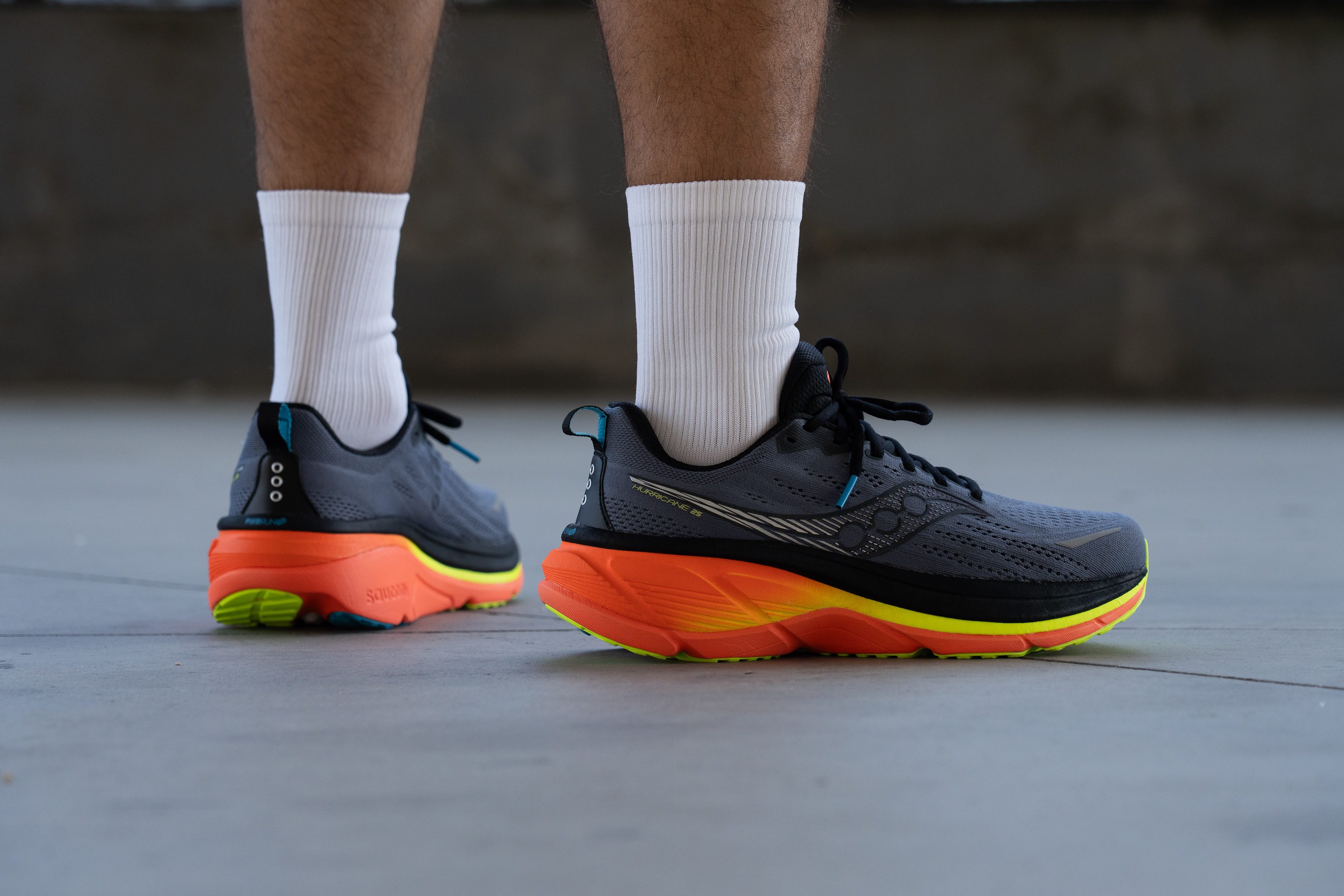
Who should NOT buy
We think the Hurricane 25 might not be the best pick for runners who value agility and a streamlined feel. It’s a massive shoe—both tall and wide—that can feel clunky during transitions. We’re convinced that those who prefer compact trainers will find better options in models like the Nike Structure 26 or the Brooks Adrenaline GTS 24, both long-standing and highly reliable choices.
We also believe the steep price tag makes the Hurricane 25 less appealing for runners seeking stability on a budget. From our perspective, shoes like the ASICS GT 1000 14 or the Adidas Supernova Solution offer good support and comfort without the premium price.
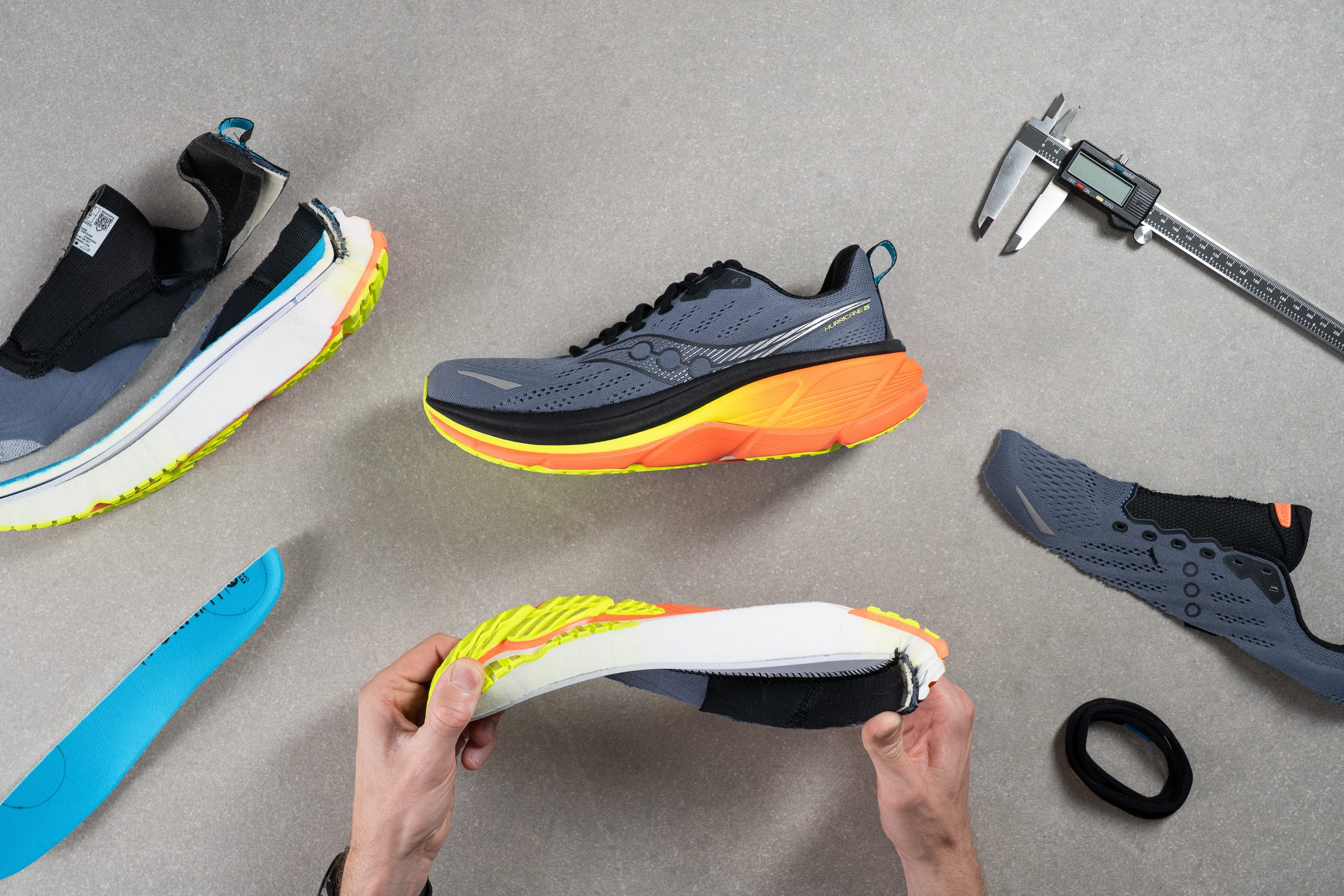
Cushioning
Shock absorption
The Hurricane 25 delivers outstanding shock absorption, surpassing the already impressive Hurricane 24. This year, we measured 151 SA in the heel and an exceptional 140 SA in the forefoot, making it one of the top choices for runners seeking cushioned stability shoes.
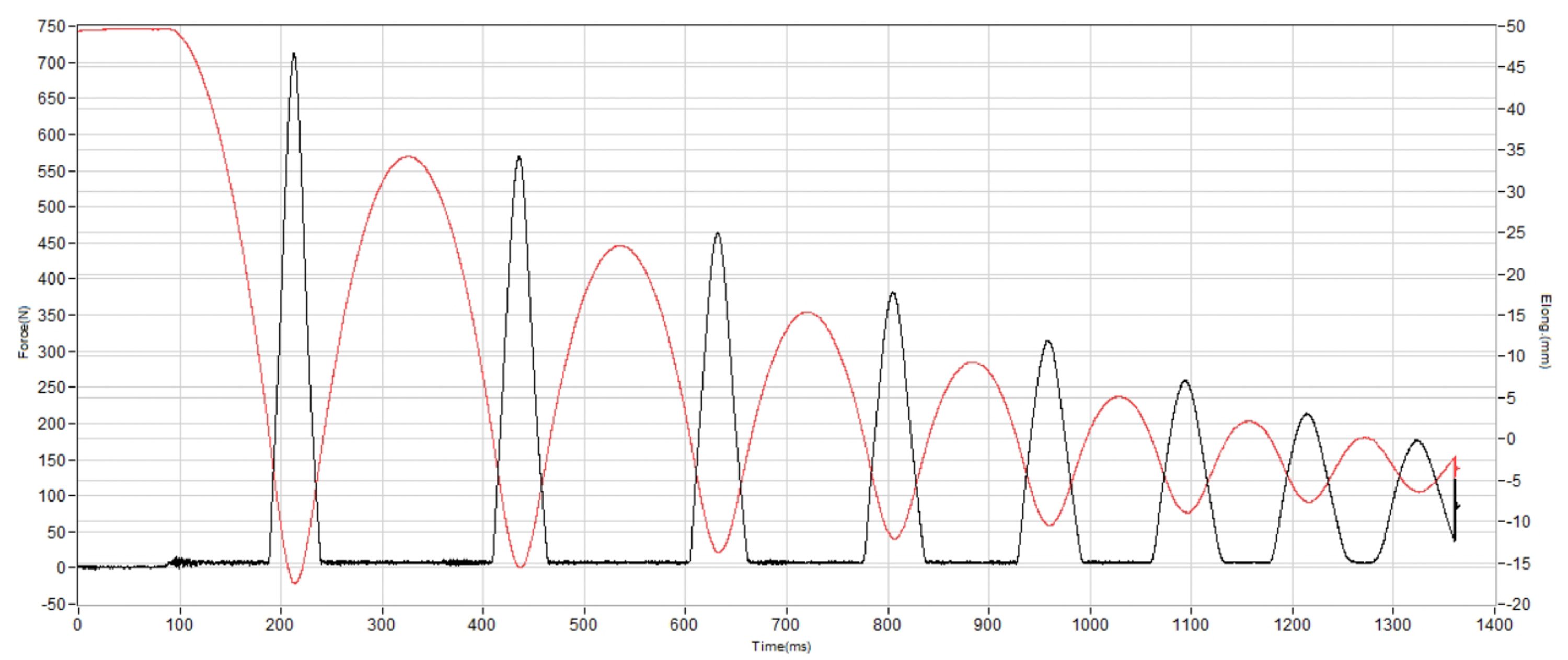
| Hurricane 25 | 151 SA |
| Average | 130 SA |
Energy return
Saucony refined the PWRRUN PB foam and switched to a premium insole to enhance energy return in the Hurricane 25, an area that had room for improvement. After our lab tests, we discovered 68.4% rebound in the heel and an impressive 74.0% in the forefoot, propelling it into the top tier for stability shoes in terms of bounce.
With this upgrade, the shoe becomes far more attractive for runners who want a protective yet responsive ride. It delivers that dependable stability while remaining lively enough to handle faster sections, making it a go-to option for long runs even with marathon-paced intervals.
| Hurricane 25 | 68.4% |
| Average | 58.7% |
Heel stack
The Hurricane 25 looks maximalist from the outside, and our digital calipers confirmed it. With a stack height of 40.2 mm, it firmly establishes itself as a true max-stack option, especially appealing for heavier runners that were already quite loyal to this model.
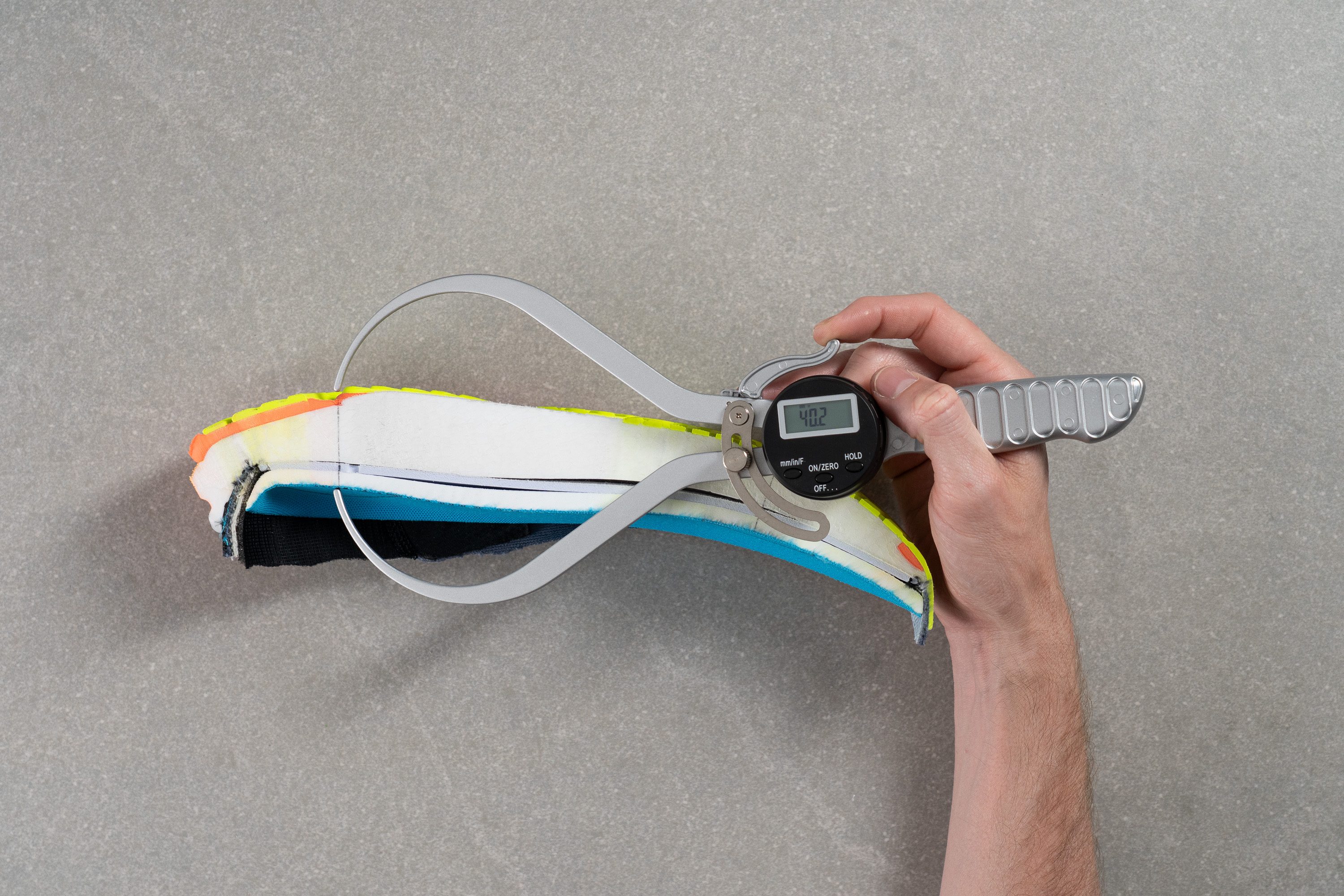
| Hurricane 25 | 40.2 mm |
| Average | 34.8 mm |
Forefoot stack
If the heel impressed us, the forefoot took things even further compared to our current lab average. We measured 33.1 mm, a height that completely removes any ground feel in the Hurricane 25... for better or worse depending on your preference.
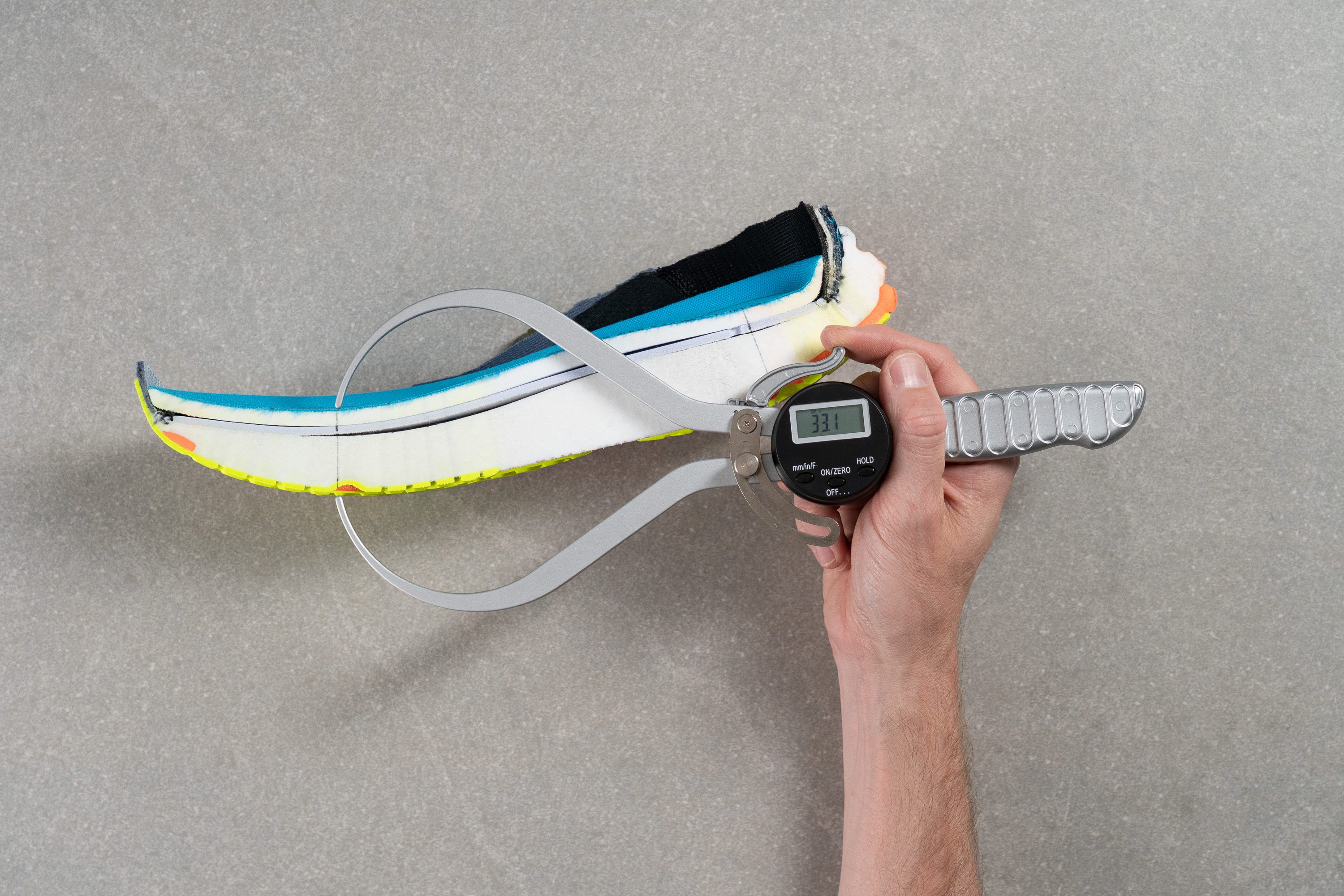
| Hurricane 25 | 33.1 mm |
| Average | 26.2 mm |
Drop
Saucony lists the Hurricane 25 with a 6 mm drop, but as usual, our measurements showed a slight 1.1 mm discrepancy, resulting in an actual 7.1 mm. The difference is minimal and unnoticeable underfoot, and the shoe unmistakably feels like a mid-drop model.
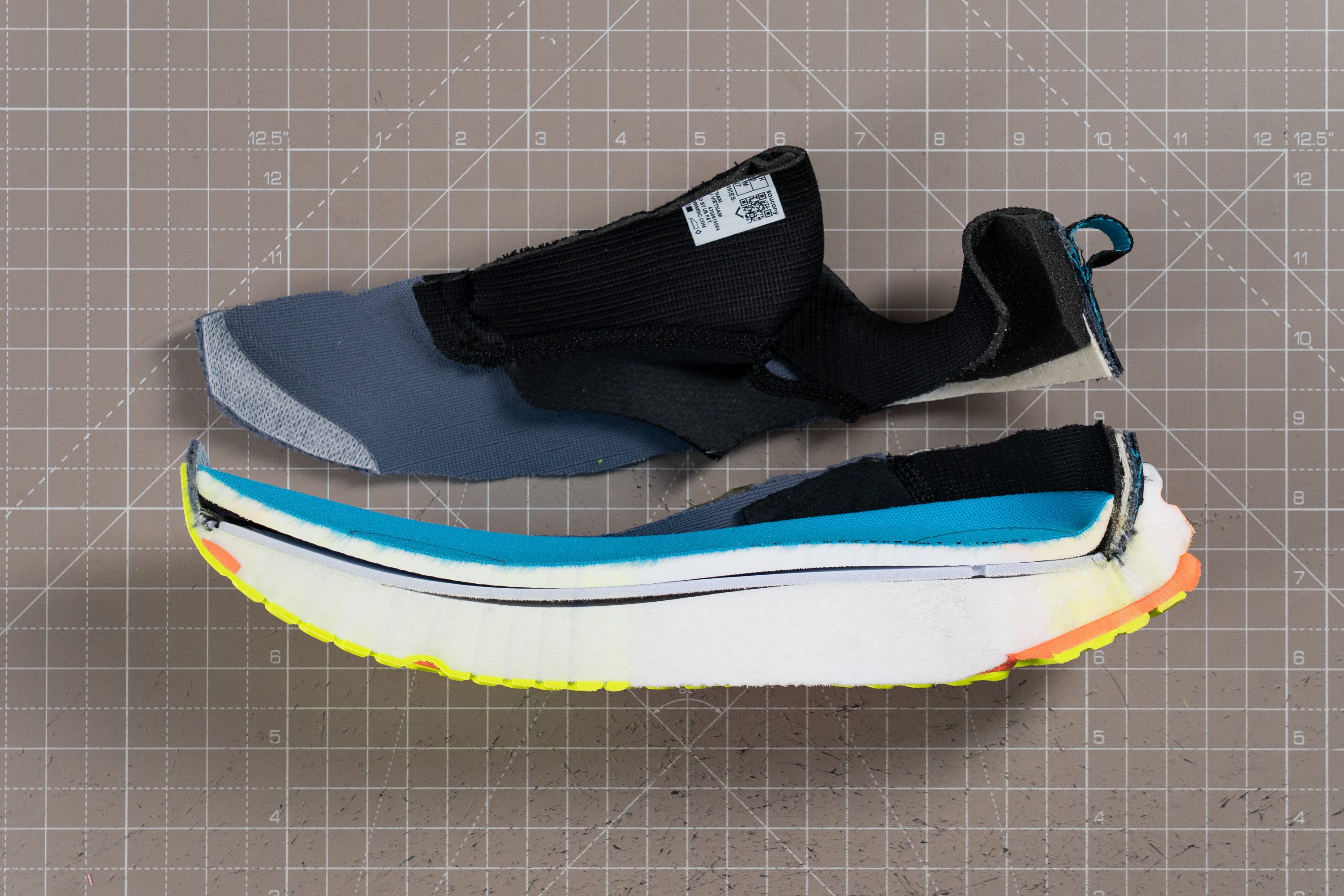
| Hurricane 25 | 7.1 mm |
| Average | 8.7 mm |
Midsole softness
The current trend in running shoes is leaning softer and softer, which likely explains why Saucony went all-in with a super-plush foam in version 24... and it turned out a bit too much for a stability model.
In version 25, Saucony opted for a more reasonable approach. We tested the new PWRRUN PB formulation and measured 16.6 HA on our durometer, compared to 12.5 HA in the previous version. It’s still pleasantly soft and comfortable underfoot, yet it also provides better stability.
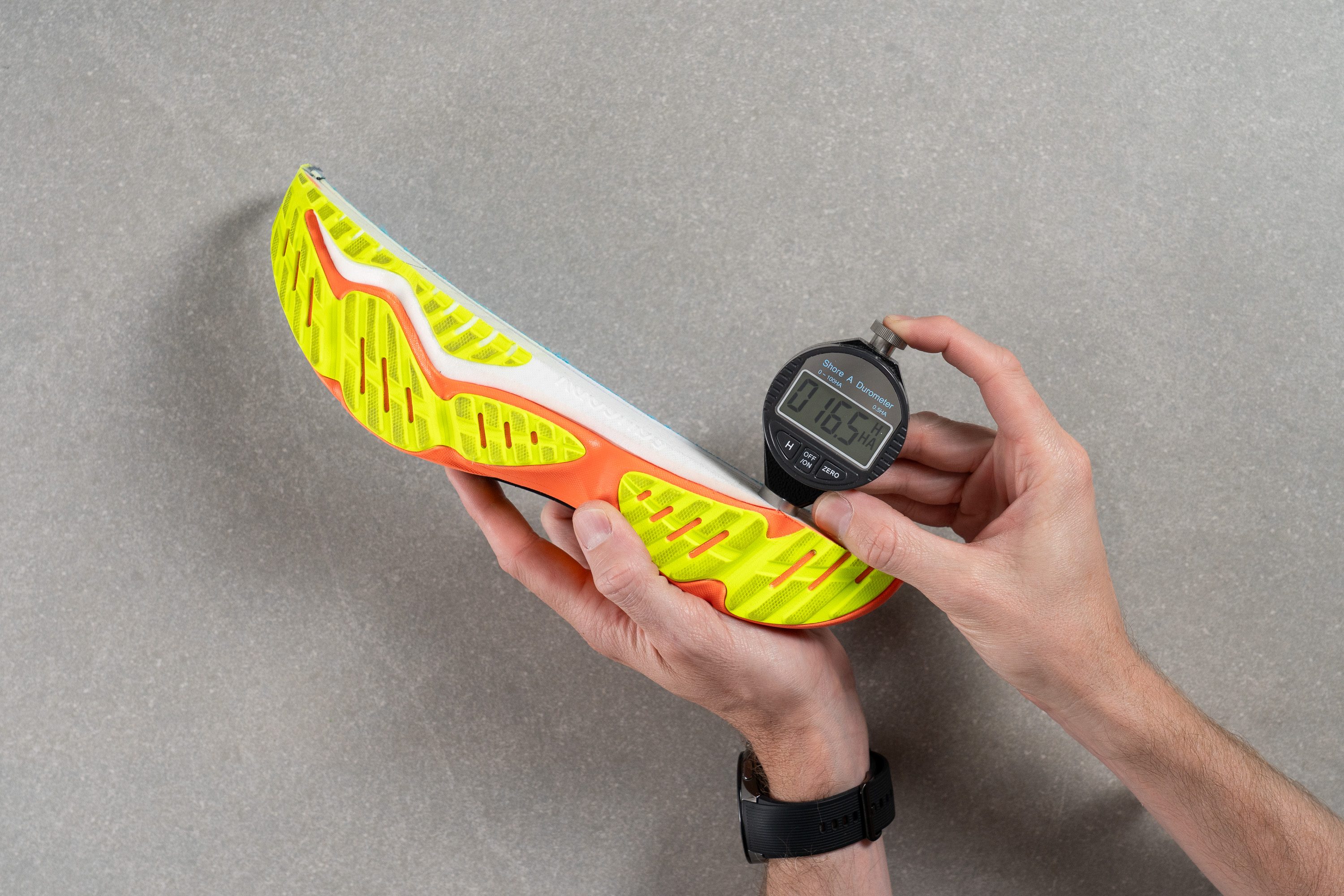
| Hurricane 25 | 16.6 HA |
| Average | 20.4 HA |
Secondary foam softness
The main foam sits inside a firmer PWRRUN cradle that serves two purposes: enhancing stability by controlling lateral motion and protecting the softer, more expensive Pebax-based PWRRUN PB core.
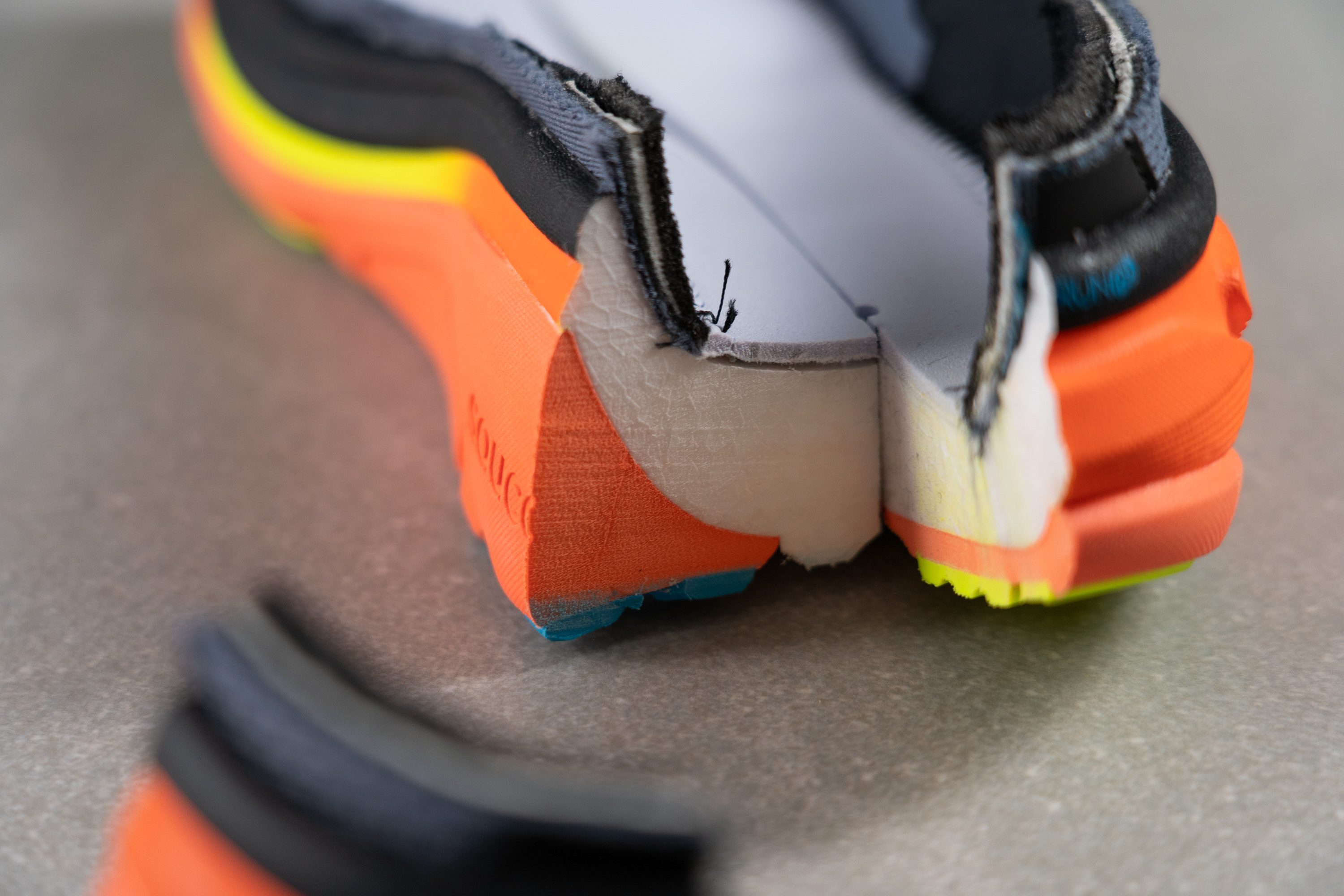
From an engineering standpoint, it’s a clever idea, as the firmer foam stays mainly on the outer edges, minimising any impact on energy return. Excellent work from Saucony here.
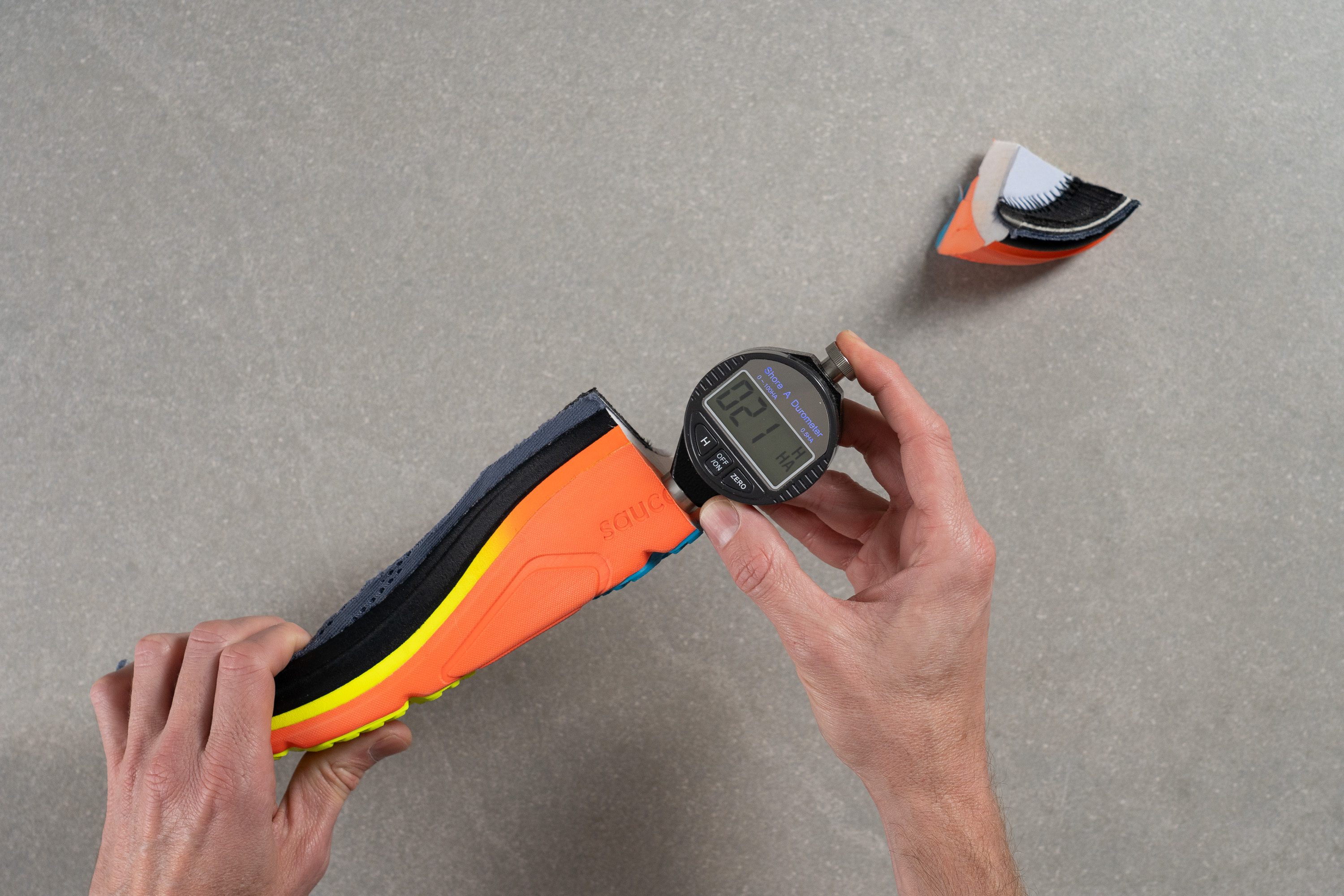
| Hurricane 25 | 21.0 HA |
| Average | 22.6 HA |
Rocker
The Saucony Hurricane 25 features a rockered geometry that delivers a progressive transition without feeling overly aggressive. Its gradual forefoot curve promotes a smooth, natural toe roll ideal for steady runs.
At the heel, the rocker is clearly more pronounced, which is not a surprise. With a medium drop and massive stack height, this sharper heel curvature is essential for heel strikers.
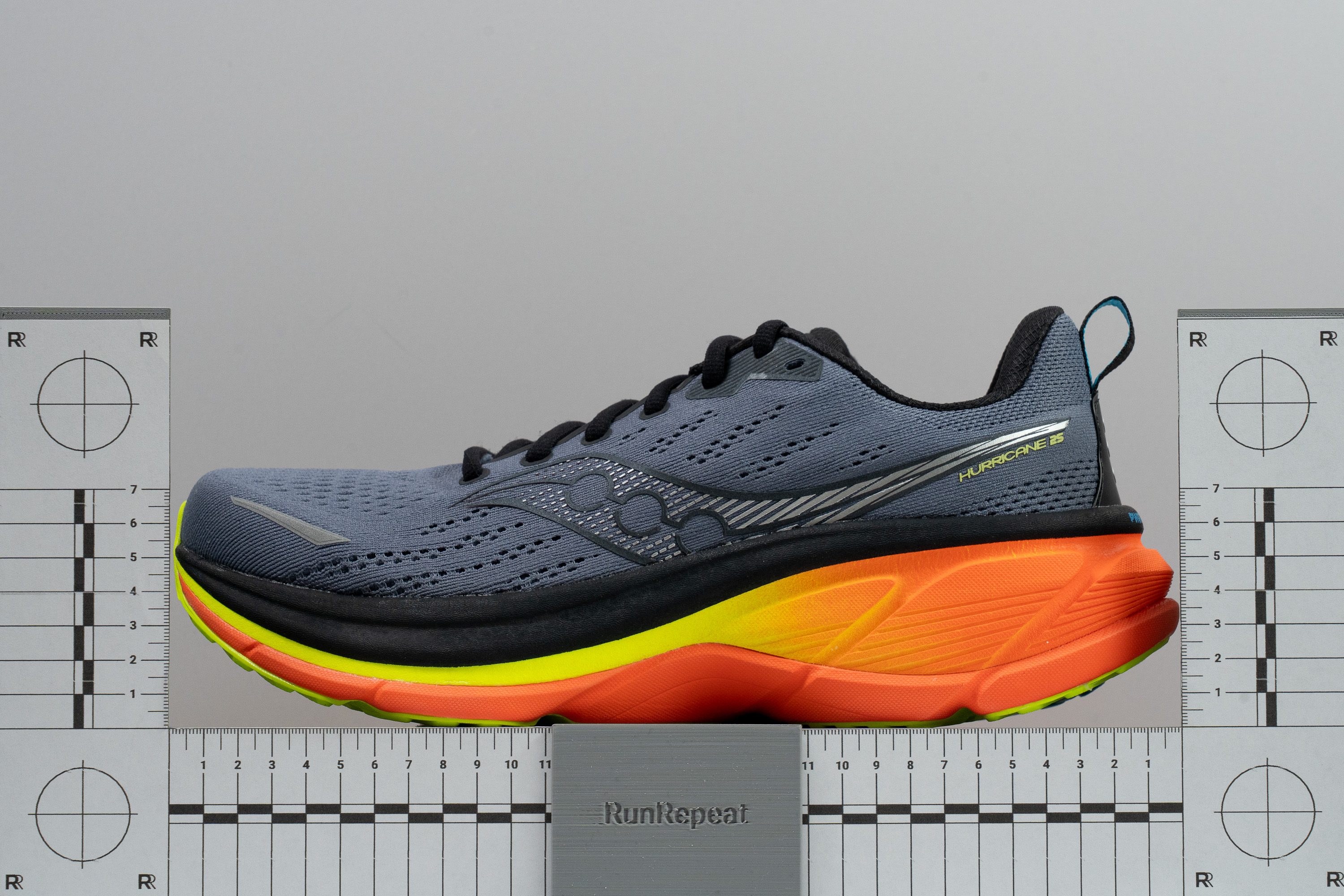
Size and fit
Size
Width / Fit
We started by crafting a gel mould of the Hurricane 25’s interior with our in-house formula, letting it cool before taking our precise measurements. This method gives us an exact view of the shoe’s internal dimensions.
When we measured the widest point of the mould, it came out to 95.1 mm—right within the ideal range for a daily trainer. This balanced width should comfortably suit most runners, and for those needing more space, Saucony also provides a wide version in select regions.
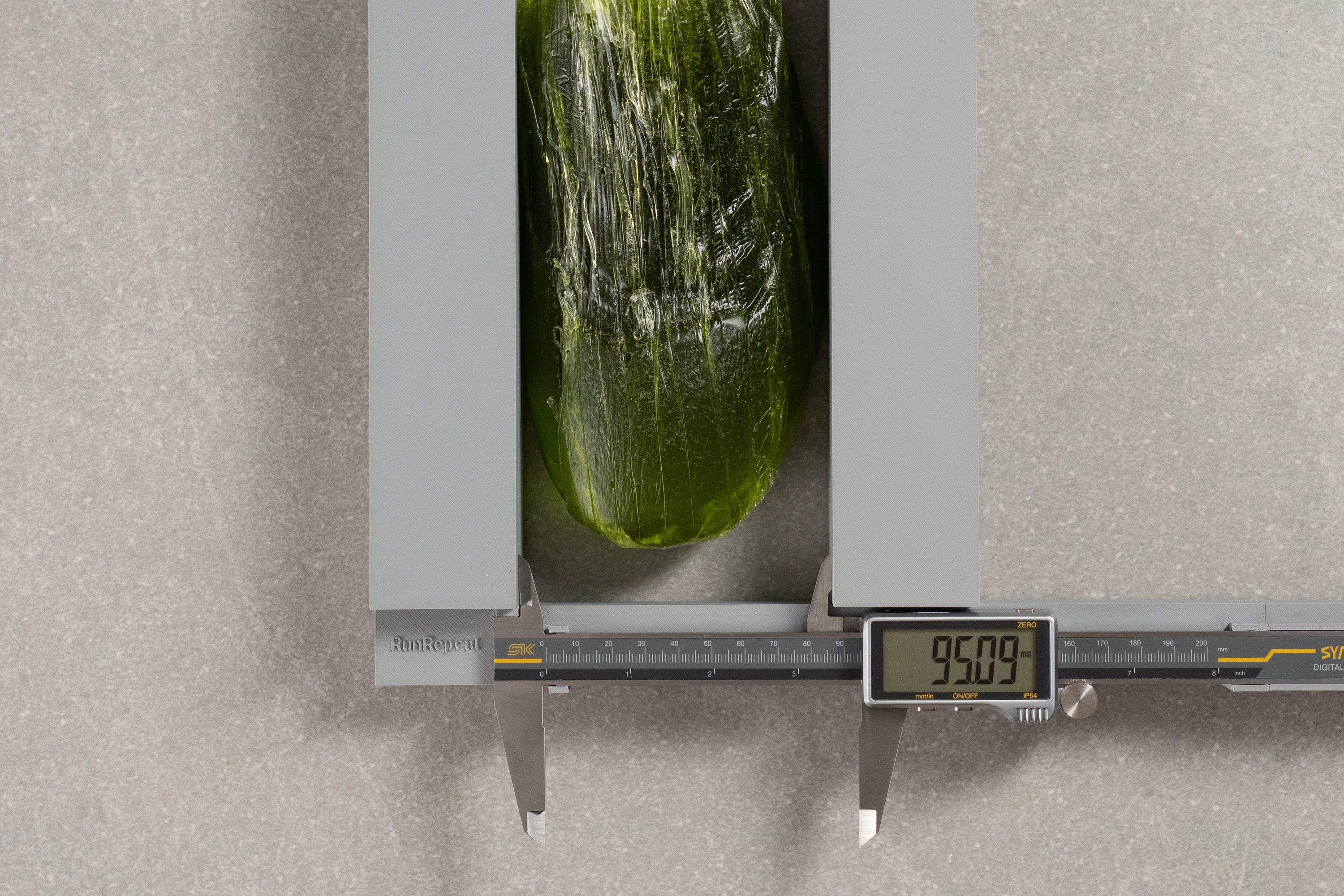
| Hurricane 25 | 95.1 mm |
| Average | 95.1 mm |
Toebox width
Our second measurement, taken in the toebox, came in right around the average at 72.9 mm. It’s clear that Saucony chose a safe design here, which is definitely an intelligent move for a mass-market trainer.

| Hurricane 25 | 72.9 mm |
| Average | 73.2 mm |
Toebox height
We found the toebox height comfortably adequate during our runs, offering a spacious fit.
To confirm this, we measured it in the lab and discovered 28.1 mm of vertical clearance, which was quite similar to the expected result.

| Hurricane 25 | 28.1 mm |
| Average | 27.1 mm |
Traction / Grip
Traction test
The Hurricane 25 features an updated version of the XT-900 rubber and subtle outsole tweaks that slightly enhance performance over its predecessor.
In our SATRA TM144 test, we got a 0.54 result, which is a welcome improvement from 0.49 in version 24. That ensures reliable all-weather grip and, for some, eliminates any excuses to skip a rainy-day run!
| Hurricane 25 | 0.54 |
| Average | 0.48 |
Outsole design
The outsole looks a lot like the previous version, with a small section of white PWRRUN PB foam showing in the middle. Most of it is well protected by the orange PWRRUN frame and, on top of that, thick XT-900 rubber pieces that give great grip as we proved before.
We also liked that Saucony refined the midfoot design, making it slightly narrower and adding more rubber coverage than before. This smart update makes the shoe feel smoother and less bulky.
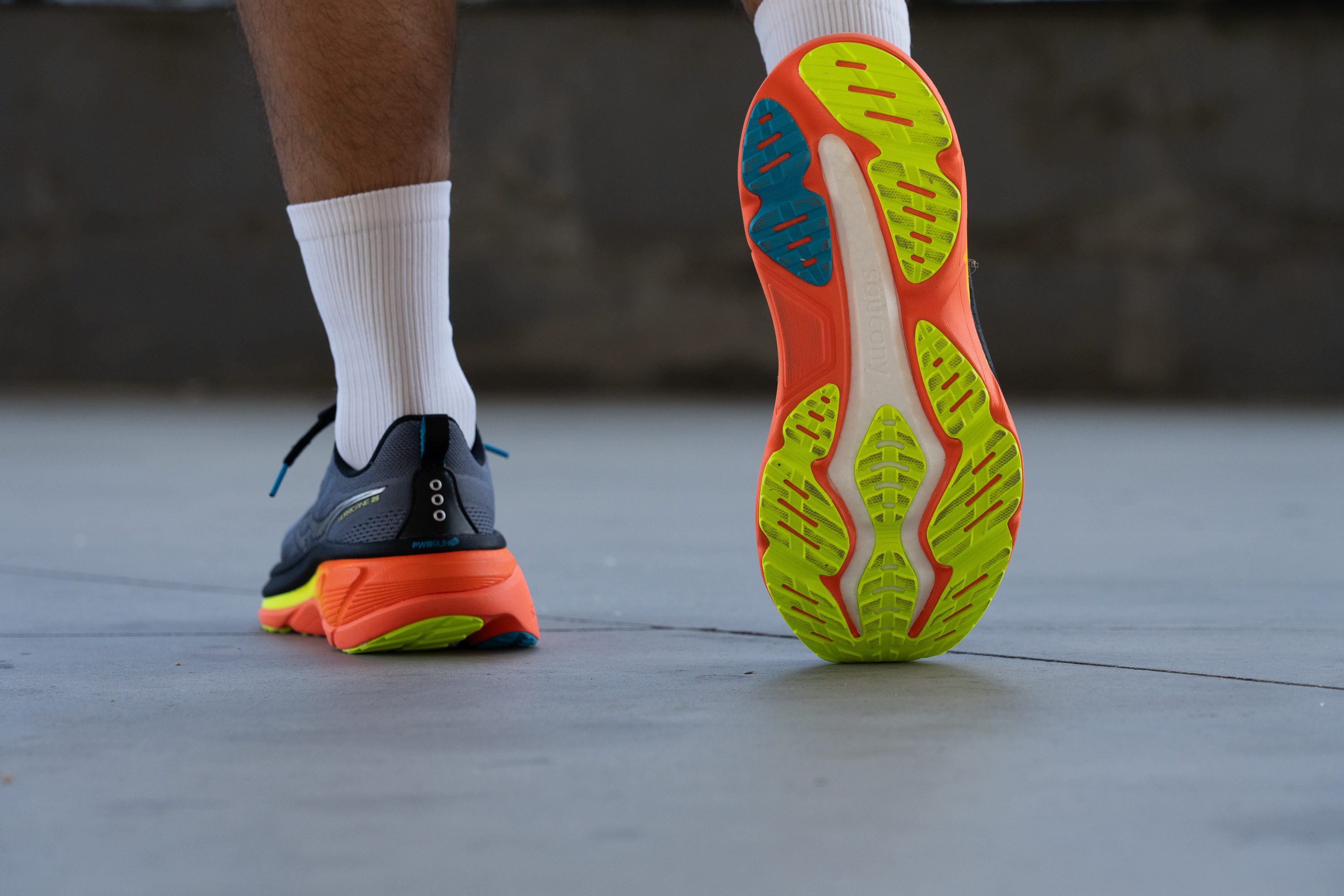
Flexibility / Stiffness
The small updates Saucony introduced in the outsole allowed this shoe to gain better flexibility while keeping its high stack height.
We measured 15.5N in our 30-degree bend test, which is a 15% decrease from the previous version. And we celebrate it, as it makes the shoe more comfortable for easy paces or even just walking.
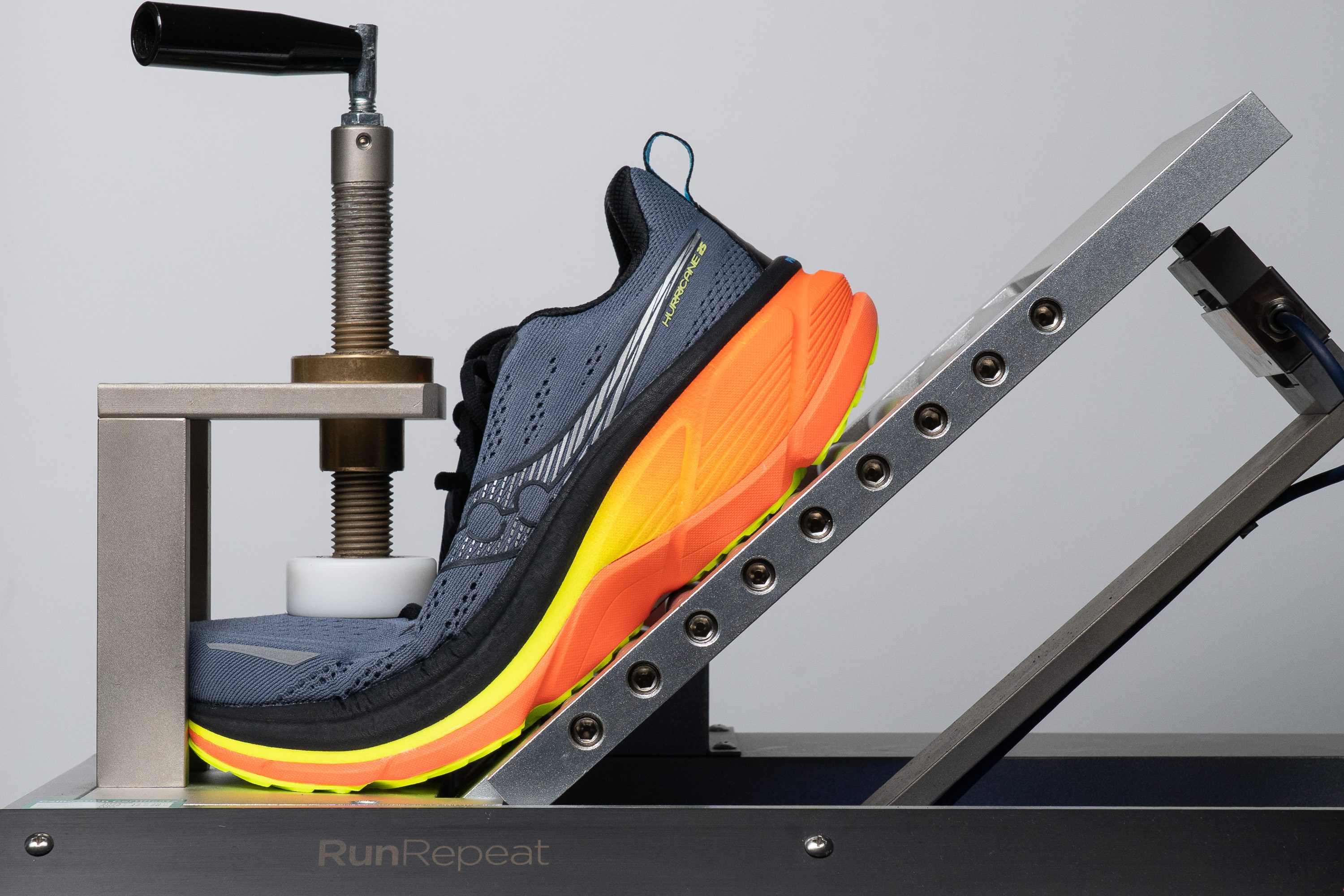
| Hurricane 25 | 15.5N |
| Average | 15.3N |
Weight
In our lab review of the Saucony Hurricane 24, we wrote exactly this: "We think that Saucony could shed at least an ounce with some minor tweaks to its design for the next version." Well, it seems Saucony might have taken a hint from us after all... the Hurricane 25 is exactly an ounce lighter than version 24!
Through several small yet meaningful refinements, we measured a final weight of 10.1 oz or 286g, down from 11.1 oz or 315g in the previous edition. On foot, we found that this improvement—combined with others like its better energy return—makes the shoe feel more versatile and enjoyable.
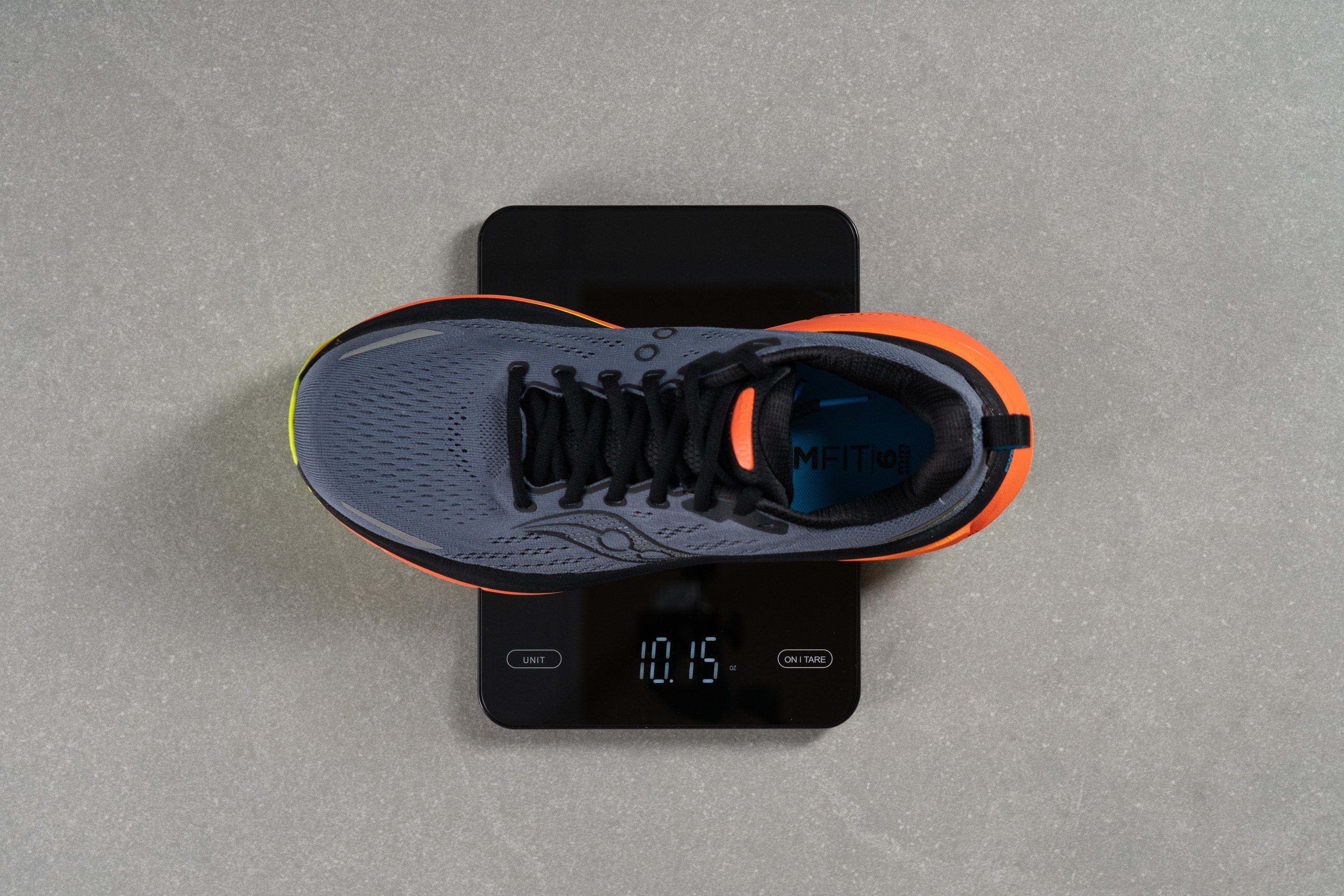
| Hurricane 25 | 10.1 oz (286g) |
| Average | 9.3 oz (264g) |
Breathability
At first glance, the Hurricane 25’s upper looks dense and tightly built, yet we quickly noticed several small ventilation holes across the toebox that seemed promising. It’s one of those unpredictable cases where the airflow could go either way.
During our smoke test, we observed that almost no air managed to escape through the toebox. Based on this poor airflow, we rated the shoe 2/5 on our breathability scale.
We then tested transparency using a light source, and the outcome confirmed our suspicions. The upper blocked most of the light, which aligns perfectly with its thick, multi-layered construction.

Under the microscope, we found the real cause. The engineered mesh does feature ventilation holes, but they’re sealed by an internal layer that improves comfort and durability while completely restricting airflow.
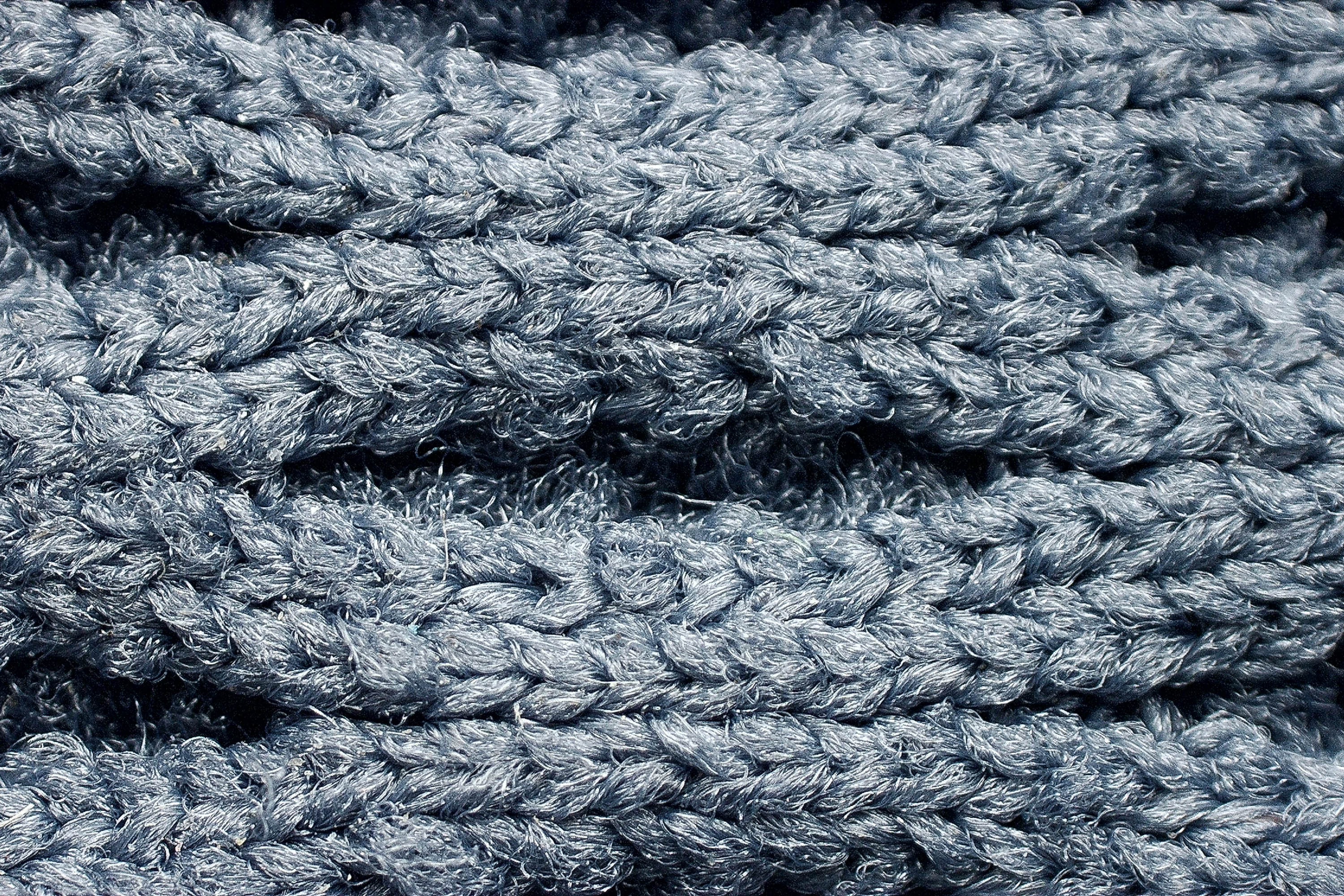
From our perspective, Saucony designed this upper with comfort and stability as top priorities, letting ventilation fall behind. That’s something you should consider, especially if you plan to train in warm or humid conditions.
| Hurricane 25 | 2 |
| Average | 3.7 |
Stability
Lateral stability test
Despite all the refinements, this shoe remains stability-focused above everything else. We confirmed through our testing that version 25 keeps the same supportive ride as its predecessors, with Saucony cleverly balancing updates like the narrower midfoot by using a slightly-firmer PWRRUN PB foam and their CenterPath technology.
In our opinion, very few shoes on the market can deliver such a smooth blend of shock absorption, energy return, and stability.
Torsional rigidity
Torsional rigidity scores above average at 4/5, which is exactly what we’d expect from a stability shoe. A more flexible platform would let the foot collapse laterally, compromising support and control.
| Hurricane 25 | 4 |
| Average | 3.5 |
Heel counter stiffness
The heel counter follows the same approach. While daily trainers typically score around 3/5, most stability shoes use a firmer structure for more secure rearfoot landings. In the Hurricane 25, we rated it at 4/5.
| Hurricane 25 | 4 |
| Average | 2.9 |
Midsole width - forefoot
As a full-stability shoe, the Hurricane 25 might feel a bit clumsy or even awkward for runners used to regular daily trainers. But that’s becoming the norm, as modern running shoes keep getting wider, and most stability models are now massive.
This one proves the point, measuring an impressive 124.4 mm in the forefoot area.
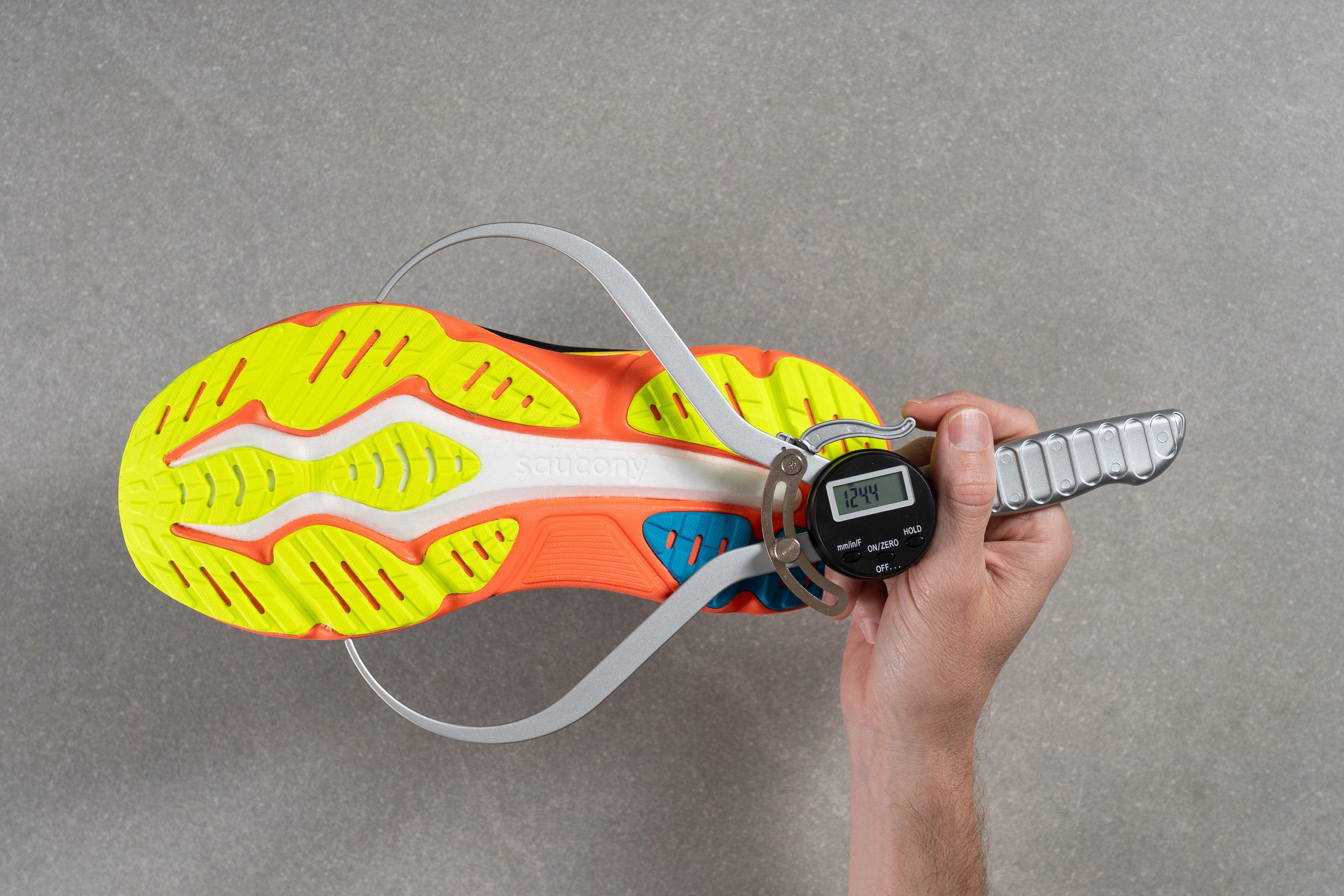
| Hurricane 25 | 124.4 mm |
| Average | 114.3 mm |
Midsole width - heel
The heel follows the same pattern, surpassing the 100 mm mark with a massive 102.2 mm measurement. Paired with the minimal midfoot tapering, it’s no surprise this shoe delivers such an ultra-stable feel.

| Hurricane 25 | 102.2 mm |
| Average | 90.7 mm |
Durability
Toebox durability
The reduced breathability often comes with the benefit of a tougher toebox, and the Hurricane 25 follows that pattern. Scoring 3/5, it’s not outstanding, but it definitely earns our seal of approval.
| Hurricane 25 | 3 |
| Average | 2.6 |
Heel padding durability
The heel padding received the same 3/5 score, but our takeaway is slightly different this time. We generally expect stronger performance here, and while it’s not a major issue, it’s an area Saucony could refine in future versions.
| Hurricane 25 | 3 |
| Average | 3.4 |
Outsole durability
The updated XT-900 rubber delivers extra grip without sacrificing toughness. After hitting it with our Dremel at 10K RPM, we measured just 0.9 mm of wear.
| Hurricane 25 | 0.9 mm |
| Average | 1.1 mm |
Outsole thickness
To stay on the safe side, Saucony packed the outsole with a generous 3.3 mm of rubber. That’s plenty to withstand daily use, even for runners who are especially hard on their shoes.
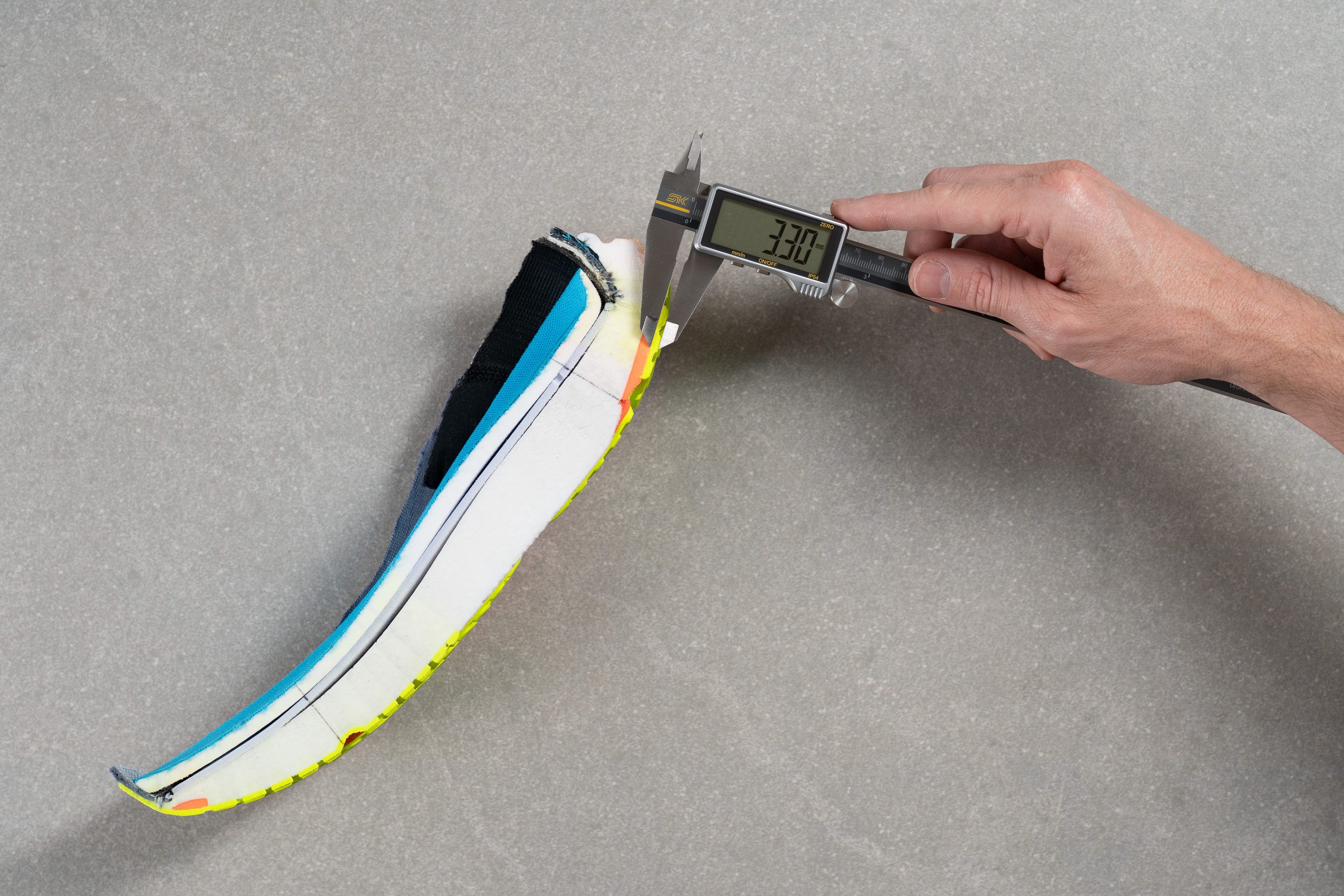
| Hurricane 25 | 3.3 mm |
| Average | 3.2 mm |
Misc
Insole thickness
One of the things Saucony keeps doing in their high-end shoes is using a premium insole with better energy return. We can’t understand why most brands keep using EVA insoles in shoes with superfoams.
This thicker 6.0-mm insole, called Super Responsive Sockliner, may sound fancy, but it actually works. It adds a small yet noticeable boost of energy return and shock absorption.
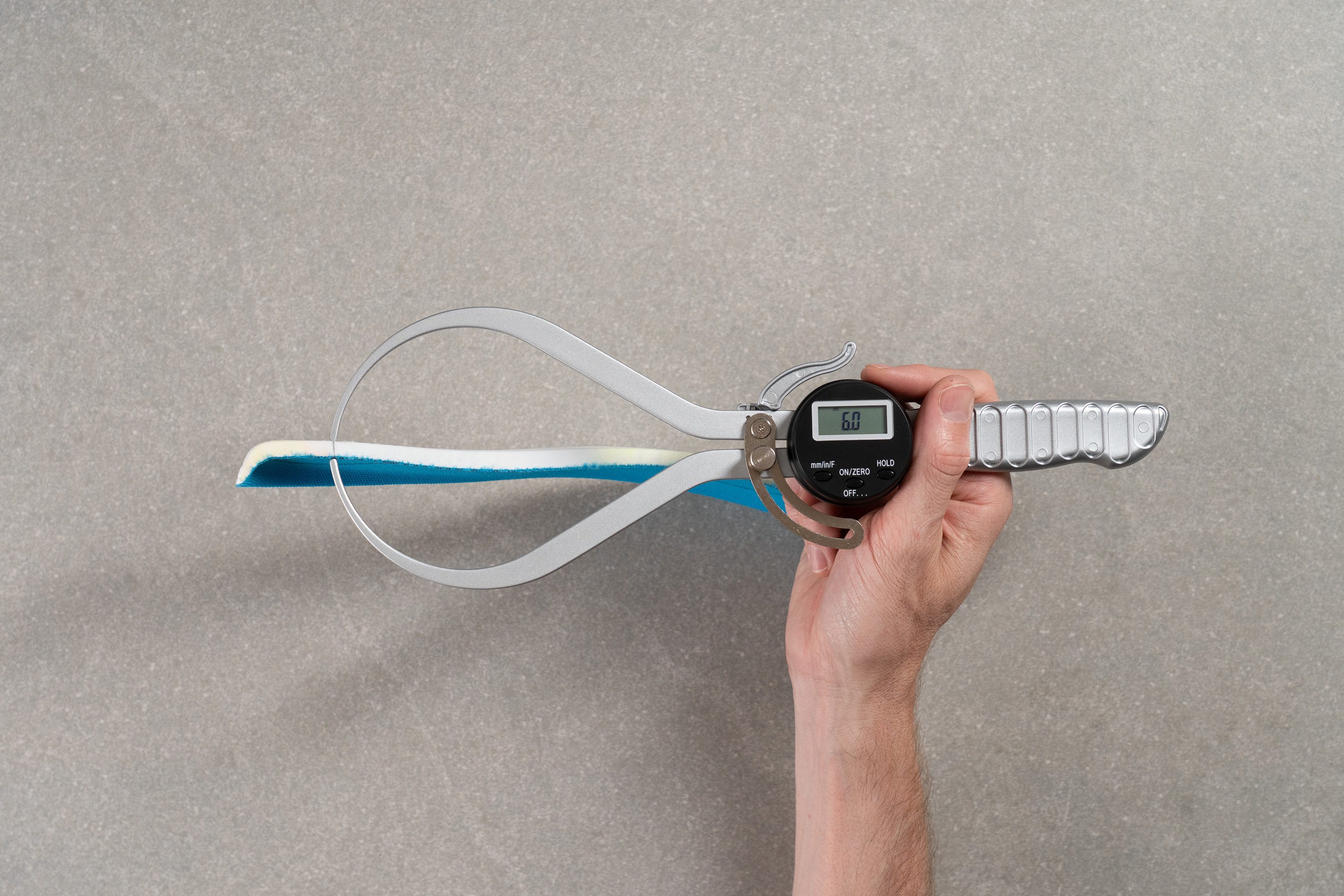
| Hurricane 25 | 6.0 mm |
| Average | 4.5 mm |
Removable insole
If you want to remove the Super Responsive Sockliner, you can easily do it. This lets you use a thinner insole and gain extra room in the toebox, which could benefit some runners.
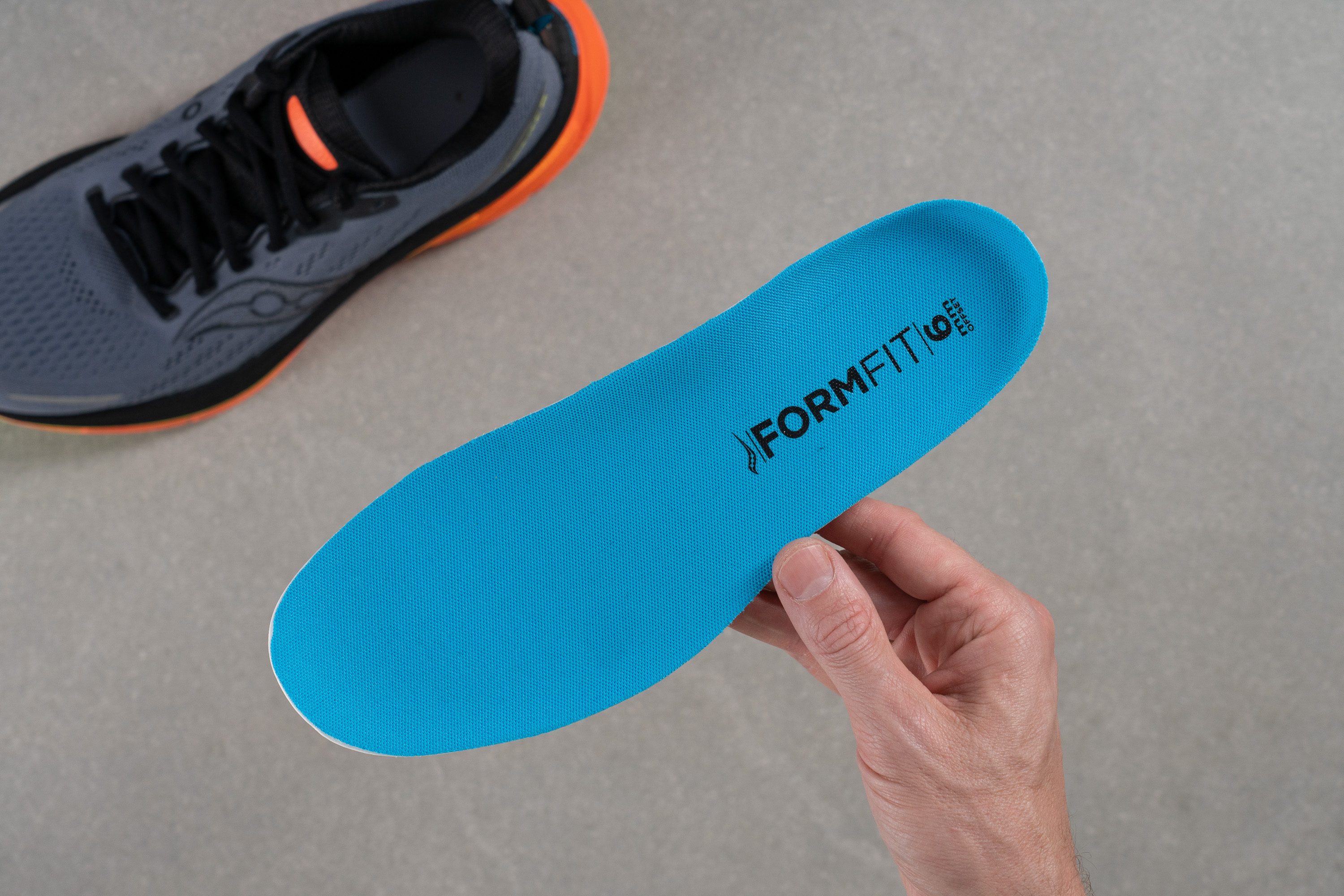
| Hurricane 25 | Yes |
Midsole softness in cold (%)
The PWRRUN PB foam of the Hurricane 25 turned 21% firmer after spending 20 minutes in our freezer. It's a decent result, though we were expecting slightly better performance in cold conditions.

| Hurricane 25 | 21% |
| Average | 25% |
Reflective elements
We were glad to find that the Saucony Hurricane 25 includes reflective details, enhancing visibility and safety during nighttime runs.
| Hurricane 25 | No |
Tongue padding
The lacing system of the Hurricane 25 is just the way we like it. It features punched eyelets reinforced with individual TPU pieces and includes an extra top eyelet for a runner’s knot. We found it a clear improvement over last year’s hybrid setup, especially in long-term durability.
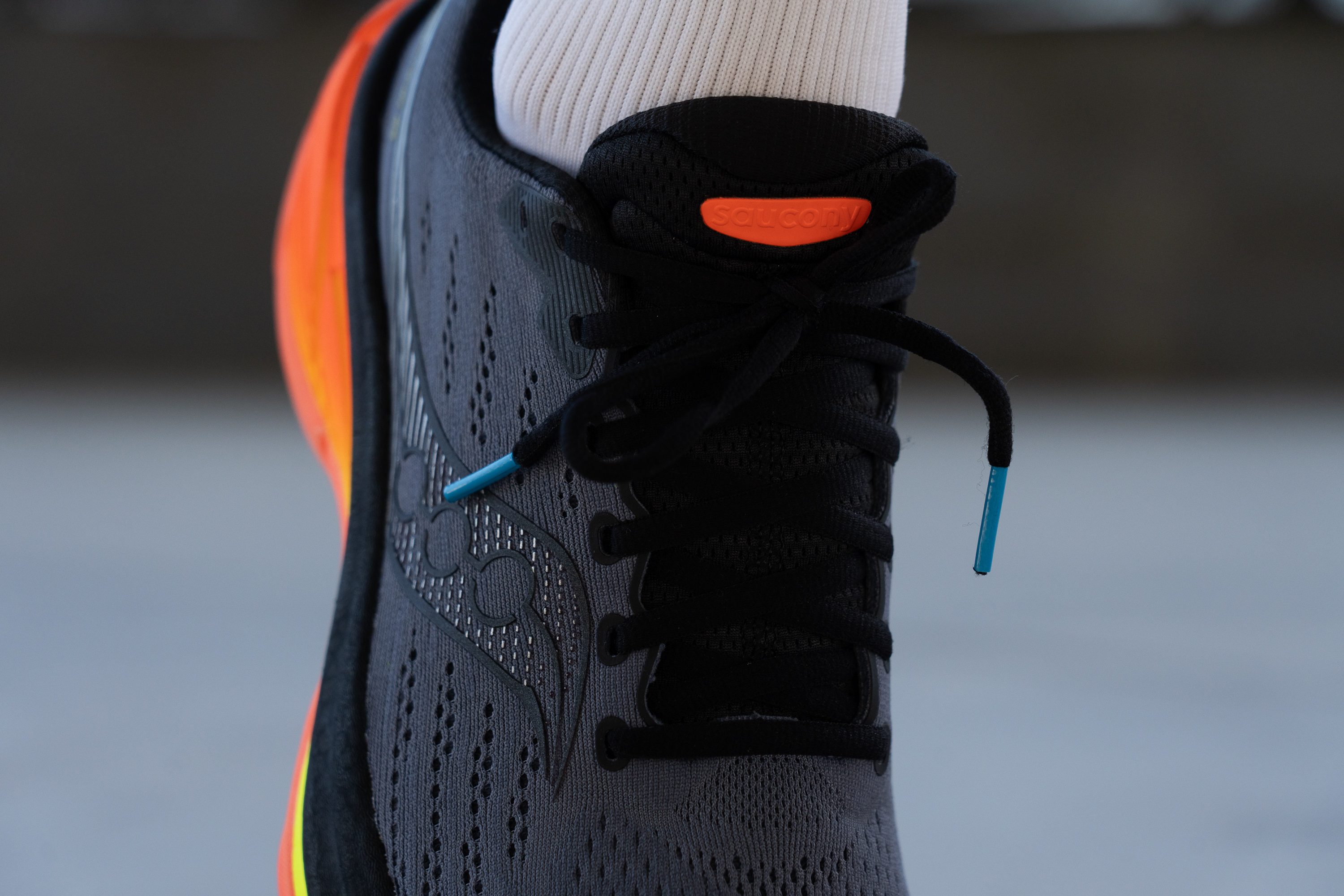
We also discovered that Saucony enhanced the tongue’s comfort without a weight penalty, increasing padding by 2.1 mm to a total of 10.5 mm in this version. The result is a super-plush, instep feel.
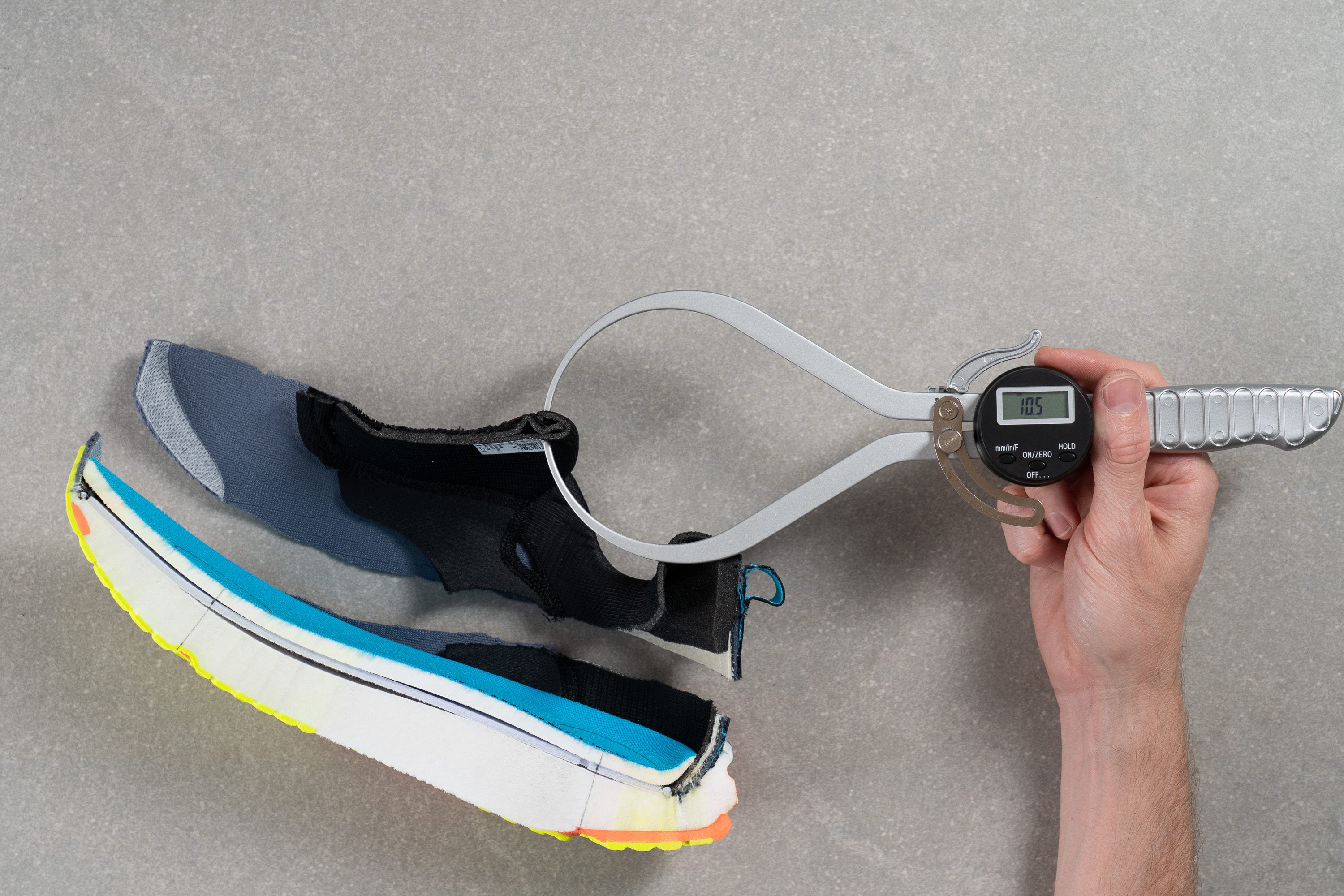
| Hurricane 25 | 10.5 mm |
| Average | 5.8 mm |
Tongue: gusset type
The tongue is securely attached to the midsole, exactly as expected from a premium daily trainer. We’re pleased to see that Saucony didn’t cut any corners here.
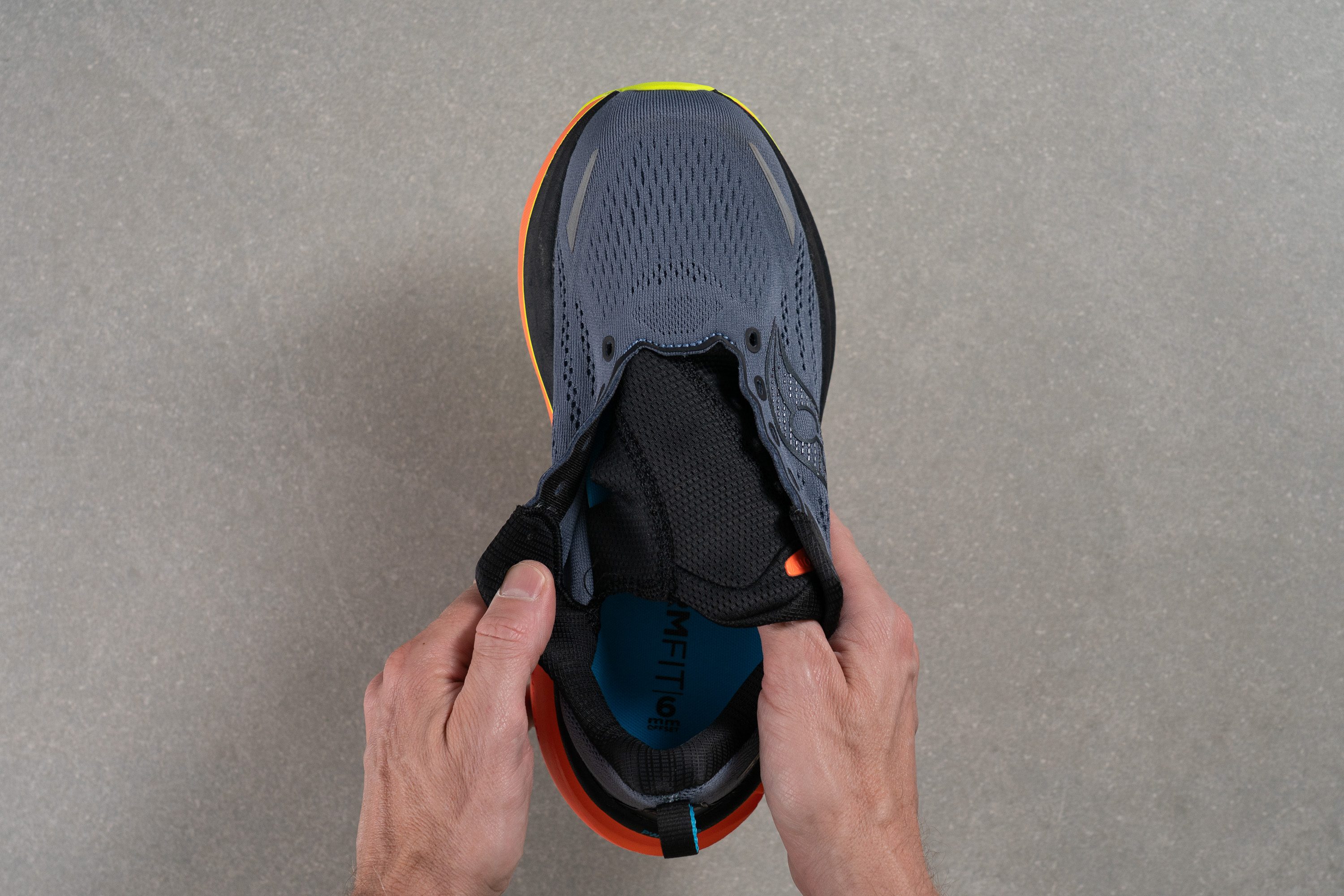
| Hurricane 25 | Both sides (semi) |
Price
Like many models this year, the Saucony Hurricane 25 arrives with a price increase over its predecessor. That’s never great news for our wallets, but to be fair, nearly everything improved in version 25, so the extra cost feels probably justified. And if that's not the case for you, go for the Hurricane 24!
| Hurricane 25 | $170 |
Heel tab
The finger-loop heel tab feels sturdy and well-stitched, built to resist tearing even with frequent use. However, its design might not appeal to everyone, and the extra piece beneath it seems unnecessary, it could’ve saved a bit of weight!
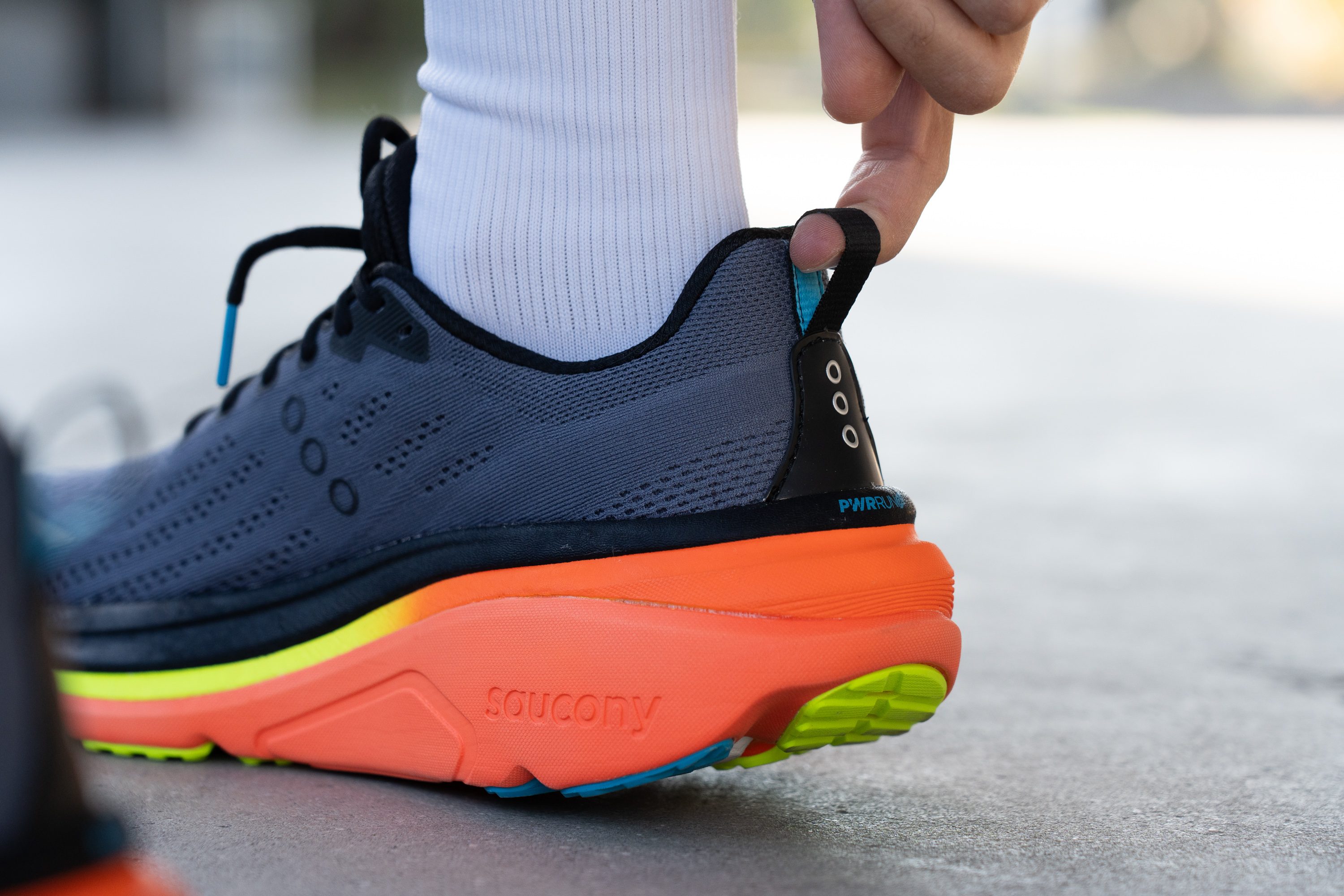
| Hurricane 25 | Finger loop |

